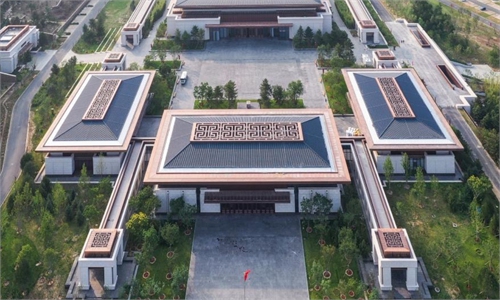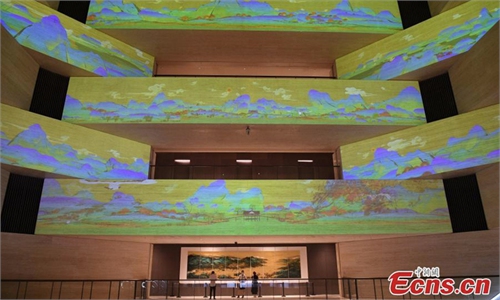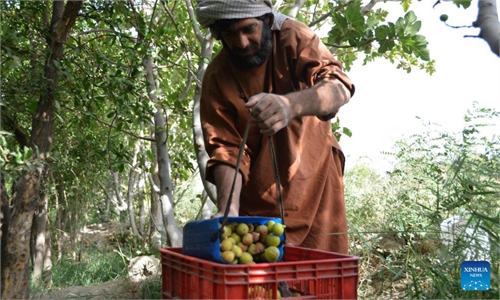ARTS / ART
Ancient Shu civilization shines in designs by Chinese artists
Finding inspiration in the past
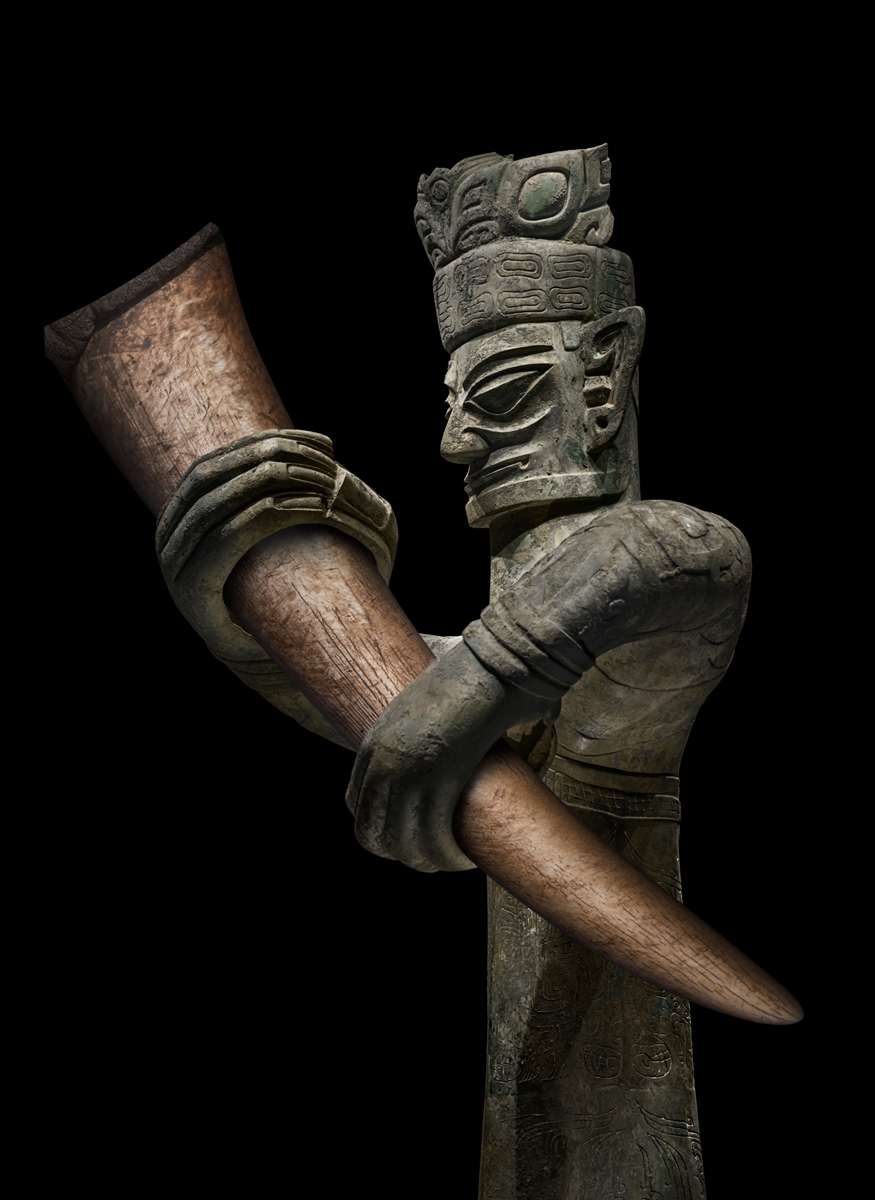
A Sanxingdui bronze standing figure Photo: VCG
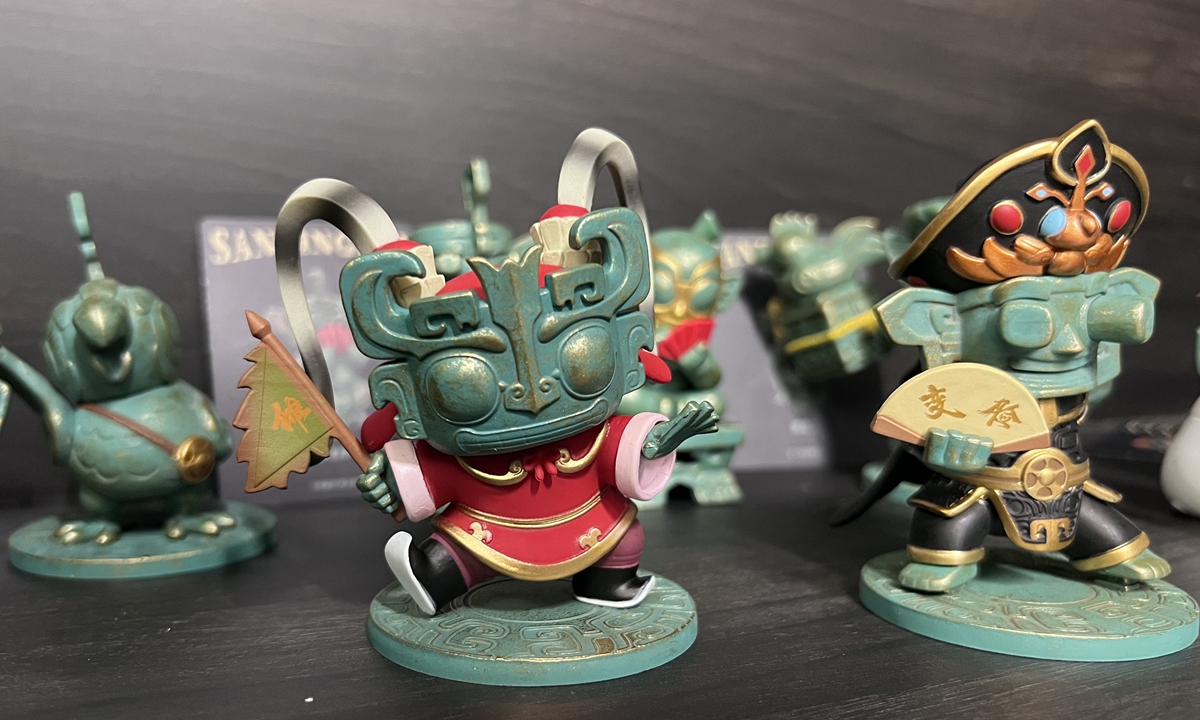
Toys based on Sanxingdui cultural relics Photo: VCG
Editor's Note:Carrying the genes and spirit of a nation, cultural relics and heritages are irreplaceable resources for a thriving civilization. A huge number of Chinese relics have become more popular over the past 10 years and allowed people from around the world to get to know Chinese culture better. The Global Times will feature a number of these "star" artifacts in this series, to make cultural relics stored in museums, heritages displayed throughout the vast land and texts written in ancient books come alive.
As Chinese President Xi Jinping has said, Chinese civilization, together with the colorful civilizations of other countries, should provide mankind with proper spiritual guidance and a strong spiritual impetus.
Today we explore the Sanxingdui Ruins, which represents the ancient Shu civilization from thousands of years ago but has also found a place in modern life through creative designs by Chinese artists.
Giant bronze masks, bronze standing statues, golden masks and even articles of silk… an increasing number of stunning cultural relics from the mysterious ancient Shu civilization have been excavated from Sichuan Province's Sanxingdui Ruins, which has been seen as a treasure house of inspiration by many Chinese artists.
A mythical beast with four wings was found during the most recent excavation of the Sanxingdui Ruins, the Xinhua News Agency reported on Monday. The beast carries a sacred tree on its back, which reflects the "different state of mind the ancient Shu people had at that time," one archaeologist speculated. Just like other relics excavated from the ruins, the unusual bronze mythical beast is sure to inspire artists to come up with creative related cultural products.
Previously, Chinese fashion designers have created clothing sporting diverse patterns inspired by Sanxingdui cultural relics. Other workers have come up with snacks such as mooncakes shaped like the bronze figures found at the ruins, while architects, graphic designers and artists have been experimenting with ways to integrate the ancient mysterious civilization into modern art.
"Designs inspired by traditional Chinese culture has been a trend in recent years since beyond the function, they also have sentimental connections and can be treated as containers of our love for and confidence in Chinese culture. The Sanxingdui Ruins has been an important part of this," Huang Qingsui, an art designer from the Zhuang ethnic group who built a database of traditional Chinese decorative patterns, told the Global Times.
A gift for artists
"Sanxingdui bronzes are very special. They look very cutting-edge even today, and even surpass many contemporary artworks creatively speaking," Wang Shenyong, president of the Sichuan Province Meticulous Painting Society, said.
Drawing inspiration from a Sanxingdui bronze figure, Wang used a comprehensive range of techniques drawn from Chinese painting traditions and mineral pigments such as cinnabar to create several paintings, as Chuanguan News reported.
Artists with the U-CUTE team deployed digital images and intelligent language technology to endow a Sanxingdui bronze mask with dynamic facial expressions and some basic linguistic ability, thereby creating a bronze mask that could say "great" and "comfortable" in Sichuan dialect in response to questions from visitors.
The mysterious Sanxingdui Ruins have also inspired the architectural industry to design a new museum that introduces the ancient Shu civilization to people today.
China's well-known architectural firm MAD submitted a design proposal for the Sanxingdui Ancient Shu Cultural Heritage Museum in 2022.
Called "The Eyes of Sanxingdui," the museum is a futuristic looking building that features a cluster of spindle-shaped wooden structures that look like eyes coming out of the ground.
The wooden structures resemble the protruding eyes of face masks unearthed from the Sanxingdui Ruins. The firm's director Ma Yansong explained that the design has the symbolic meaning of "unknown" and "illumination."
Cultural relics excavated from the Sanxingdui Ruins have motivated creative workers to come up with new designs for everything from ice cream and cosmetics to digital collections and toys.
"The continuous excavation of cultural relics in the Sanxingdui Ruins is like opening blind boxes. Every new cultural relic unearthed is brand new material for design. Sanxingdui cultural product design has infinite possibilities," Feng Shixiong, founder of a studio that designs Sanxingdui creative products, told the Global Times.
Common interests
Sanxingdui related art works have not just attracted domestic attention, but also captured the interest of foreign fans of Chinese culture.
In recent years, some cultural relics from the Sanxingdui Ruins have been exhibited in countries such as France, Japan and Italy, while related products like a Chinese-English bilingual mobile game that lets users go on virtual excavations at the ruins have been launched to allow overseas fans to better understand Shu culture.
"The Sanxingdui Ruins have a unique ambience that came from its cultural characteristics. Designers though will often just depict the atmosphere at the site using modern designs instead of copying and pasting the culture's most common designs," Wang Yizhong, an architect in Beijing, told the Global Times.
"Such modern interpretations on the ancient culture also show how history can continue to influence people in the future," Wang remarked.
